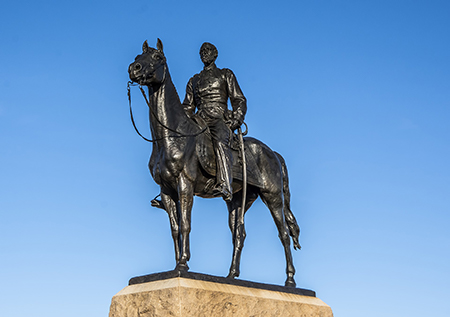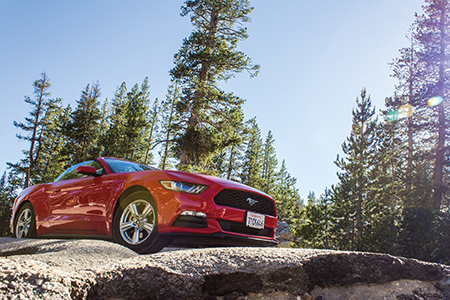Gallop with the Horses
The Equus Caballus
The domesticated horse we know today, also known as Equus Caballus, was introduced into North America by Spanish explorers. Escaped horses eventually spread across the American Great Plains.

Interestingly, there is a debate about the origin of Equus Caballus. There have been recent mitochondrial studies of an ancient horse called Equus lamei. Equus lamei once populated North America and died out more than 11,000 years ago. The studies suggest it is genetically equivalent to what we know as the modern, domesticated horse. This could mean that Equus Caballus is technically a native species and its evolutionary origin is North America.
Did you know A 19th century horse named ‘Old Billy’ is said to have lived 62 years?
Man and Horse
Aside from the anthropological debate, the horse has contributed greatly to the advancement of civilization in North America. From clearing forests for farmland and a form of travel bringing pioneers to the west to diversifying Native American’s hunting habits and rounding up livestock on ranches, the horse is embedded in American history and legend.

Man’s first association with the horse, some 50,000 years ago, involved forcing them off a cliff, corralling them into natural cul-de-sac, or frightening them into pits so they might be clubbed to death for their meat. With 50% more protein and 30% more iron than leanest beef, it offered early cavemen a tasty diet for sustaining life. Then, the horse became domesticated; the world was transformed. The equine’s speed and power gave man a new approach to the world. Now tribes were united into empires, distance travel became viable, and cultures and languages raced around the known world. The horse was used for food, herding, warfare, transportation, communication, agriculture, trade, commerce, pleasure, sport, religion, symbol, status, gift, industry, competition, and recreation.
Did you know Hackney ponies were first bred to pull carriages?
The horse and wheel gave a great boost to man’s ability to move goods from place to place. A man can carry about 50 pounds, a horse can pack 200 pounds, but a horse and a wheeled vehicle can transport up to twice the horses own weight; consequently a 1,000 pound horse could move 2,000 pounds of cargo to penned animal or shops in the city.
Hay! Want to Hear Some Fun Facts About Horses?
Fun Facts
- Horses can sleep both lying down and standing up.
- Horses can run shortly after birth.
- Domestic horses have a lifespan of around 25 years.
- Horses have around 205 bones in their skeleton.
- Horses have been domesticated for over 5000 years.
- Horses are herbivores (plant eaters).
- Horses have bigger eyes than any other mammal that lives on land.
- Because horse’s eyes are on the side of their head they are capable of seeing nearly 360 degrees at one time.
- Horses gallop at around 44 kph (27 mph).
- The fastest recorded sprinting speed of a horse was 88 kph (55 mph).
- Estimates suggest that there are around 60 million horses in the world.
- Scientists believe that horses have evolved over the past 50 million years from much smaller creatures.
- A male horse is called a stallion.
- A female horse is called a mare.
- A young male horse is called a colt.
- A young female horse is called a filly.
- Ponies are small horses.
- Ponies have thicker manes and tails than horses.
- Ponies have proportionally shorter legs, thicker necks and shorter heads.
- Well trained ponies are good for children while they are learning to ride.
- As well as for riding, ponies are used in driving and working roles.
- Young ponies are called foals.
- Shetland ponies are small but very strong.
- Pound for pound, ponies are stronger than horses.
- Miniature horses are even smaller than ponies.
- Ponies are easy to look after, requiring half the food that a horse would if it was the same weight.
Jokes

What did the horse say when it fell? “I’ve fallen and I can’t giddyup!”
